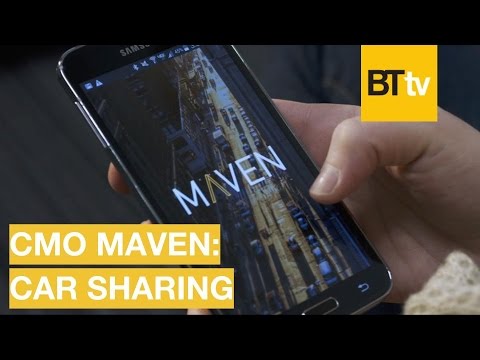The A to Z of How To Organize A Pitch – part I
The time when a client decides to make a pitch for the communication agency (either it’s a PR, advertising, digital or social media one) is extremely important in its business path. In order to make sure it’s a well spent time both for him/her and the company is representing, but also for the agencies involved, the client must be sure of a certain guide pitch , of a series of “rules” that will make their lives easier and also will lead to a successful result.

We talked with Cristina Oncescu, Head of Strategy pastel, and she put down some guidelines that will help you a lot.
What should a client know and must take in consideration when organizing a pitch?
Before organizing a pitch, a client should take time to carefully consider if they really need to change the current agency. Therefore the Institute of Practitioners in Advertising (IPA) recommends the following points to consider before embarking on an agency search:
Why are they organizing the pitch
The client should be very clear that changing agency would be in the best interests of the brand or the business organization, and will bring future value. Before embarking on a search for a new agency, he must be really sure that best efforts have been made to restore the existing client-agency relationship to health.
Have full support from top management
If a pitch is deemed to be the right course of action, the marketing or corporate communication must ensure that the client company’s top management fully endorse it, and that the key decision makers are clearly identified and enlisted in the process.
Consider getting outside help
It is advisable to seek outside professional help from specialist consultants, if considered suitable for the client company. The process is more objective, and dealing with the incumbent agency less unpleasant.
Check the contracts
Before the process begins, the client should check the provisions within the contract with the incumbent agency, particularly with regard to the notice period and termination of contract.
Inform the current agency
The client should consider the implications of informing existing agency that the pitch is taking place, weighing the need for confidentiality against the scenario of the incumbent finding out about the pitch from a source other than their client.
Decide the role to play by the new agency
The client should decide whether he is acting as the orchestrator of a series of agency relationships, he needs a ‘lead’ agency, or he requires a ‘one-stop-shop’.
Have a clear brief
The pitch organizing team should gain full agreement with all those involved in the decision making process about what the requirements of the agency are. They must invest time and effort in agreeing the budget and producing a written brief describing the brand or company’s current position, and where it wants to be in the context of clear marketing and business objectives.
Decide the kind of pitch to hold
Give some thought to the type of search that will best assist the client in making the appointment. The traditional pitch process is expensive for both parties, so agree fees where appropriate to offset a fair proportion of agency costs and to ensure a professional approach on both sides. Understand that many successful agency appointments are based on reputation, personal chemistry, credentials and references from other clients, as opposed to pitches. Workshops and trial projects are also effective methods of choosing an agency. Equally, online ‘e- sourcing’ techniques may help in the initial stages of researching the marketplace, but they should not replace the face-to-face contact which is so important in conducting a successful review and selection process.

If the client has checked the above and ended deciding to go through the pitch process, here are the steps:
- Prepare all the necessary background information
- Prepare an outline brief, including a clear indication of the brand or company marketing/communications budget. Consider the scope of work you will be asking the successful agency to undertake and ask the agencies to prepare some initial financial estimates accordingly, right at the outset. This avoids misunderstandings and manages expectations on both sides.
- If the client has chosen a consultant to help manage the selection process, work with them to develop a brief on the type of agency required, e.g. in terms of size relative to budget, location, and specialization, potentially conflicting business, etc. and draw up carefully the criteria that will form your checklist against which to judge the initial agency longlist.
- Identify relevant existing work for other clients, within the appropriate communications discipline, which they rate highly.
- Talk to colleagues in their own and other companies about their agency experiences.
- Undertake any necessary desk/online research, consulting agency directories, agency trade associations, and the trade press for additional background information about agencies that might interest you.
- Public sector clients need to ensure that their agency search and selection process is compliant with any public procurement regulations.
- Hold chemistry meetings and sign a confidentiality agreement
- Client should seek credentials information and case studies from, and hold initial chemistry meetings with, selected agencies that match the criteria in your outline brief.
- A confidentiality agreement must to be signed before undertaking any meetings. It is of benefit to both parties to enter into such an agreement, which should cover information and materials supplied by the client for the pitch and those produced by the agency in response.
- Client should decide whether to make a monetary contribution to the pitch. If so, this can be included in the non-disclosure agreement to form part of a wider pitch agreement. Some financial contribution (announced upfront and the same offer to all agencies on the shortlist) shows commitment and the seriousness of their intent.
- Think of the response required and prepare a written brief accordingly
- Prepare a concise but thorough written brief for the competing agencies. It is advisable to clarify if the pitch is a statutory one.
- It must be clear from the brief whether strategic proposals alone are required, whether some creative ideas or a full creative pitch are expected, or whether a workshop or trial project is envisaged. Agencies should respect the client’s wishes in this. The client should understand that creative pitches are an expensive and resource-draining exercise for agencies.
- Be clear about the nature of the services that they expect to use the agency for (e.g. some or all of brand planning/strategic thinking, communications planning, creative development, media planning and buying, digital, PR, events, etc.).
- Make the budget explicit from the outset.
- Identify and make clear all criteria on which the agencies’ presentations will be judged (e.g. strategic thinking, creative concepts, costing proposals, etc.).
- Specify the time allowed for meetings or presentations. If pitches are to take place at client premises, advise agencies on the presentation facilities available, size and nature of meeting rooms, number of participants, etc.
- Be disciplined on how many agencies are invited to respond to a preliminary ‘Request for Information’ (RFI). Asking more than 10 agencies is usually very wasteful of both client procurement and agency resources, and indicates an unclear brief. Good consultants will usually advise fewer than this to ensure a deeper focus on the agencies genuinely in contention.
- No more than six agencies should be asked to prepare extended credentials or ‘think-piece’ presentations for shortlisting.
- Invite up to three agencies to pitch (or four if incumbent included)
- Decide positively on a pitch list of up to three agencies only. If the incumbent is invited, the list can go up to four agencies in total.
- The client should not invite the incumbent to pitch if they have no intention of re-appointing them. Talk to the incumbent about why they are not including them in the shortlist.
- Avoid being seduced into lengthening the list.
- Make competing agencies aware of the number of agencies on the pitch list and whether the incumbent is included. The client should confirm in writing whether or not the pitch process and the names of the participants are confidential.

- Consider the time necessary for response to the brief
- Allow sufficient time for agencies to have face-to-face meetings to discuss the brief, ask questions, and to talk through their initial thinking. Don’t underestimate the value of informal meetings with the competing agencies in helping you to evaluate team ‘fit’.
- If the client decides to use a workshop approach, build in sufficient time to implement this process, including scheduling diary time for key personnel involved in the selection team.
- Time must be allowed for development of constructive ideas between brief and presentation. Bearing in mind that full proposals can take weeks or months to develop in an ongoing relationship, four weeks minimum is suggested for the development of work for a full creative pitch. Different pitch approaches, such as extended credentials, ‘think-pieces’, strategic recommendations, and workshops, can take less time and still be effective.
- Give background market data, interpretation and clarification
- The client should be willing to share, on a confidential basis, the overall business/corporate objectives, market data and other relevant research and allow agency personnel access to people in the company with whom they would work, if appointed.
- Make sure that there is always a specified senior member of the client’s company to handle all enquiries and meet requests of the agency to ensure consistency of response. Don’t underestimate the time involved of someone being fully available over a short period of time.
- Avoid giving the answers to one agency’s carefully considered questions to all the competing agencies (unless those questions highlight important information which should have been included in the original brief).
- Allow the same rules of access to all agencies pitching.
- Agree basic contractual terms upfront
- It is not usually in the interests of either the client or the agencies involved to spend time and money on negotiating full contract terms at this stage of the selection process, but the fundamental terms of business (such as budget, basic remuneration and scope of work) should be addressed in a Heads of Terms agreement.
- However, should the client have fixed terms of business which are not open to negotiation, then these should be put on the table, up front and in full, to make sure the competing agencies are clear on the terms under which the contract will be awarded ultimately.
- Understand the roles of all those involved on both sides and set up an objective evaluation system
- Ensure that all the decision makers have been fully briefed and that they are all present at each stage.
- Advise the agencies of job titles and roles of those attending for the client.
- Establish an objective evaluation system for assessing each presentation.
- Ensure that the agency presentation teams include people who will actually work on the business.
- Decide and inform quickly and fairly
- Decide on the winning agency as soon as possible, normally no more than one week after all the agency presentations have taken place (except in those special cases where it has been agreed to put competing creative work into research).
- Establish a proper procedure for notifying both successful and unsuccessful agencies of the decision.
- Ensure that all participating agencies learn of the result on the same day. Once the client has established that the chosen agency would accept the appointment if selected, they should inform the unsuccessful agencies before confirming the decision with the successful one. This is usually the best way to ensure that the losers do not hear the bad news first from someone other than the client.
10.Key guidelines on implementation and relationship management
- After the pitch, give the losing agencies the courtesy of a full ‘lost order’ meeting. Use a feedback form based on previously announced evaluation criteria.
- Any losing agencies must return all confidential material and information provided – in whatever format – and the client must not use any of losing agencies’ pitch ideas or information provided during the pitch process.
- Honour the incumbent agency’s contract, particularly with regard to the agreed notice period and payment of outstanding invoices.
- Ensure that they co-operate fully in a hand-over to the new agency, making sure that all materials belonging to you are handed back in accordance with the contract.
- Commence formal contract negotiations, based on the Heads of Terms agreement, and ensure final contracts are signed by all parties. Allow sufficient, but not open-ended, time for this negotiation to take place.
- Welcome the winning agency into the start of a long-lasting and mutually satisfying relationship. Arrange thorough for mutual induction meetings to create familiarity between client and agency, ensure understanding of respective business processes, and manage expectations for the working relationship.
- Agree realistic objectives for brand or corporate communications, put measures of effectiveness in place and report key metrics regularly at CEO/main board level.
- Client-agency relationships are valuable and need active management: review and reinvest regularly in the relationship by the strategic use of brainstorms, ‘awaydays’ and refreshing the team with new people.
What are the main DON’Ts?
- Don’t do it if you can still fix the situation with your current agency. A pitch is expensive and time-consuming for both the client and the agencies involved.
- Don’t fish for ideas and never award a winner.
- Don’t appropriate ideas from non-winning agencies.
- Don’t do it without a clear brief.
- Don’t do it without having evaluation criteria. Make sure the agencies are aware of them.
- Don’t do it without a set budget. It’s frustrating to receive great ideas that cannot be implemented because they cost way more than the available budget.
- Don’t invite more than three agencies. Or four with the incumbent agency. Held a thorough pre-selection process before.
- Don’t do it without having clear evaluation criteria. Make sure the agencies are aware of them.
- Don’t take more time to announce the winner than it took the agencies to prepare the pitch proposals.
- Don’t avoid post-pitch meeting with non-winning agencies. Tell them why they didn’t win.
Is car sharing the next version of Uber?
The carsharing or car-sharing system is a model of car rental where people rent cars for short periods of time, often by the hour. They are attractive to customers who make only occasional use of a vehicle, as well as others who would like occasional access to a vehicle of a different type than they use day-to-day.
According to Wikipedia, carsharing services are available in over 1,000 cities in several countries. As of December 2012, there were an estimated 1.7 million car-sharing members in 27 countries, including so-called peer-to-peer services, according to the Transportation Sustainability Research Center at U.C. Berkeley. Of these, 800,000 were car-sharing members in the United States.
As of July 2017, car2go is the largest carsharing company in the world with 2,500,000 registered members and a fleet of nearly 14,000 vehicles in 26 locations in North America, Europe and Asia, followed by Zipcar with 767,000 members and 11,000 vehicles. According to Navigant Consulting, global carsharing services revenue will grow to US 6.2 billion by 2020, with over 12 million members worldwide. The main factors driving the growth of carsharing are the rising levels of congestion faced by city dwellers; shifting generational mindsets about car ownership; the increasing costs of personal vehicle ownership; and a convergence of business models. Carsharing contributes to sustainable transport because it is a less car intensive means of urban transport, and according to The Economist, carsharing can reduce car ownership at an estimated rate of one rental car replacing 15 owned vehicles. More about the concept here.
In February, the car-sharing service Zipcar signed a deal to provide vehicles to Uber, possibly portending additional future cooperation in the field of mobility services. Zipcar parent Avis Budget Group said that it would supply Uber drivers with the opportunity to ferry passengers around in Zipcar branded sedans. Although at the beginning the deal is limited to 20 sedans in Boston, it opens the door for similar collaboration in other cities.
Zipcar provides rent-by-the-hour vehicles to motorists, particularly in urban areas, as an alternative to car ownership. Now, Uber drivers will be allowed to access the fleet of vehicles in Boston to serve their customers at hourly rental rates.
“As the automotive landscape evolves, technology is playing an ever-increasing role in transportation services, and we are well-positioned to meet new and evolving customer needs and demands, as evidenced by this new partnership,” said Andrew Kupiec, a vice president for Avis Budget. “Our quality, well-maintained vehicles, coupled with Zipcar’s technology, will give Uber’s driver partners wheels when they want them.”
This move marked one of the latest in a series of Uber partnerships with car providers, including rental car firms Enterprise and Hertz, and most recently a deal with German automaker Daimler to provide self-driving cars in the future.
Moreover, last year, Uber started a partnership with GM’s Maven, representing a 90 day pilot in San Francisco that allowed the Uber drivers to lease a Chevrolet Cruze, Malibu or Trax for $179 per week (plus fees) with no mileage limit, and included insurance. “This partnership with Maven combines our vast ridesharing network with GM’s extensive fleet vehicles and gives people without access to a car the ability to easily make money driving on the Uber platform,” said back then Rachel Holt, regional general manager Uber, for engaged.com.
Following that, in April, Uber made another important step, by launching Uber Central, similar to the consumer version of Uber, except multiple cars can be ordered at once. The service could be especially valuable for businesses that need to pick up several clients from different places at the same time. Uber Central is part of the Uber for Business platform, which Uber launched a few years ago to help businesses manage employees’ ground transportation needs.
What is even more interesting and different is that passengers don’t need an Uber account or even a smartphone. The business itself manages the rides and all related information from a single dashboard. According to ciodive.com, Uber said more than 8,000 companies participated in the pilot program. The new tool also includes reporting, billing and management features.
Uber’s interest in the sharing cars’ programs and affiliations doesn’t stop here. Only four days ago it was announced that, following the 2016’s 90 days trial with GM’s Maven, the service is available now also in Boston, Phoenix, and Washington, DC, while Baltimore and Detroit are said to be following soon.
“The program is aimed at drivers for rideshare apps like Uber and Lyft, and delivery apps like Postmates, GrubHub, and InstaCart. Someone who’s interested in driving for any of these on-demand services, but doesn’t own a vehicle, can rent a Chevy Bolt through Maven Gig for $229-a-week. The weekly price includes insurance, maintenance, and electric vehicle charging. Maven first launched its gig worker product last May in San Diego and San Francisco. Since then, Maven says its customers have logged 170 million miles driving for various on-demand apps,” wrote The Verge.
More on the subject you can read here, while if you are interested in 8 ride and car sharing alternatives to Uber and Lyft, you can read here.
